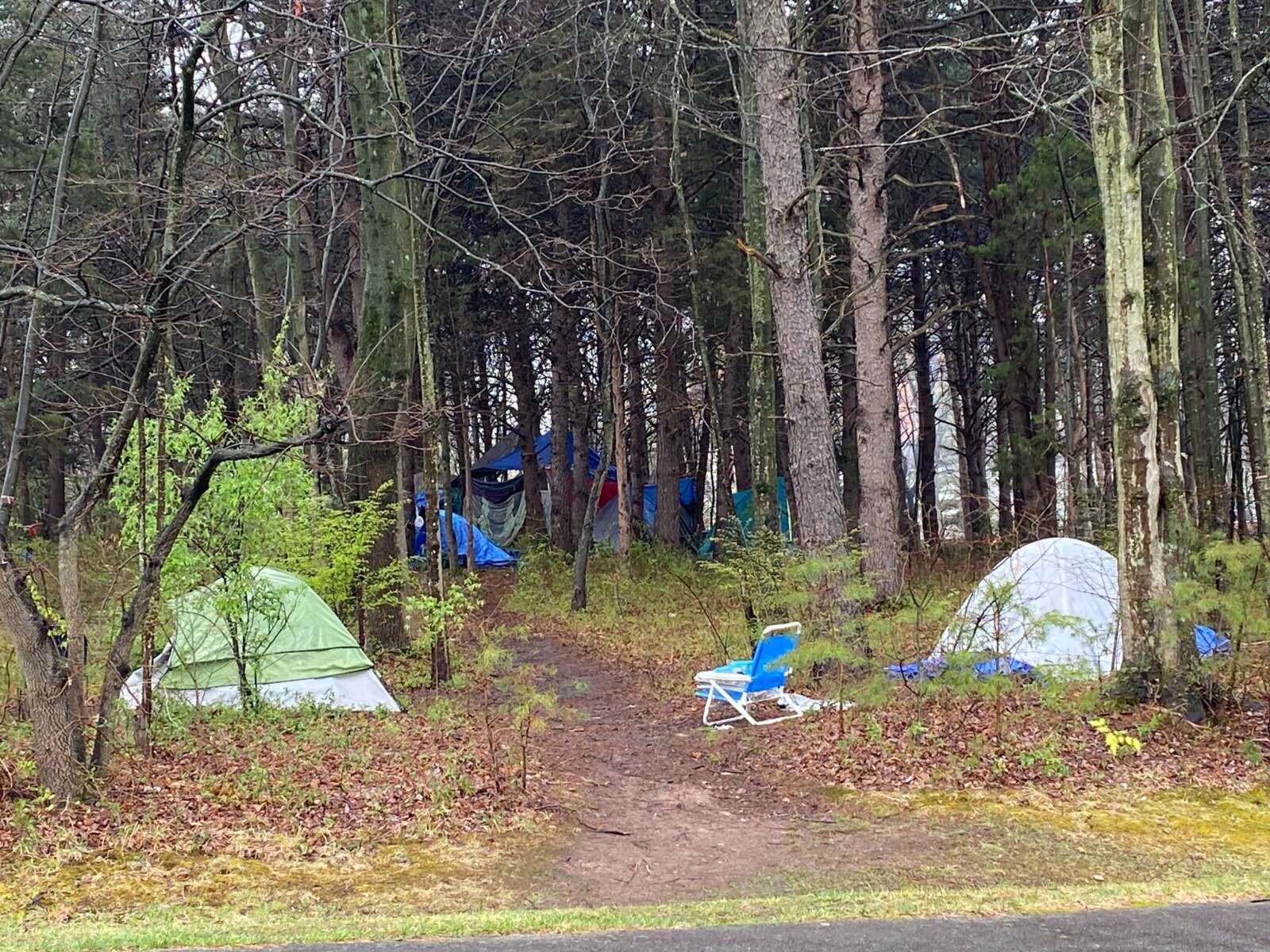
A tent encampment housing between 20 and 35 individuals in the woods between Inova’s emergency room and Sunrise Assisted Living Center in Reston may soon fold.
Fairfax County officials hope to open up a temporary overflow shelter in a government building in the Reston Town Center North area to accommodate the people who’ve been living in the tents.
“No Trespassing” signs are set to go up around the encampment, which is located on county property, in the coming weeks, as the county’s hypothermia shelters close their doors for the 2023-2024 winter season on Sunday (March 31).
The Reston encampment is the largest one in the county, according to Hunter Mill District Supervisor Walter Alcorn. Cornerstones — the nonprofit that runs Reston’s Embry Rucker Community Shelter — and its outreach teams plan to discuss their options with residents as the transition is phased in over the coming weeks.
“It’s really an unmanaged campground,” Alcorn said yesterday (Wednesday) in a call with media. “You know, if you walk through and talk to people, that’s really how its functioning at this point. So, I have concerns about, frankly, the safety of the folks living there now and the personal safety.”
Many details of the overflow shelter, including when it will open and how many people it can fit, remain to be determined, but it’s intended to help wind down activities in the encampment that has occupied the hill for years.
In some cases, neighbors have complained about the encampment, though data on how many police calls have been placed wasn’t immediately available.
According to Alcorn, there have been issues at the Reston Regional Library and reports of break-ins in some of the surrounding communities, but he cautioned that it would be “unfair” to attribute all incidents to the encampment.
Sunrise recently put up a fence around their property, creating a buffer between their property and the encampment.
Alcorn said he asked staff for an “effective and humane” plan for winding down the camp. He emphasized that its future is already in limbo because that property and the rest of Reston Town Center North are slated for major redevelopment. Plans call for a new Embry Rucker shelter and a new library, though an earlier agreement with a private developer fell through.
The encampment first began as a handful of tents but has since grown substantially. Reston Strong, a local nonprofit organization, began offering support to the area, providing food, tents and other supplies.
The organization launched a Neighbors in Tents campaign in 2022 to raise awareness about homelessness in Fairfax County. A temporary tent community was set up in front of the North County Governmental Center (1801 Cameron Glen Drive) as an alternative after the county’s hypothermia and COVID-19 emergency shelters closed for the season.
The organization called for permanent solutions to address homelessness in the county, which saw a 10% increase in people experiencing homelessness from 2022 to 2023. The results of the county’s most recent point-in-time count — an annual survey of the number of people without housing — are expected to be released in May.
Reston Strong says it welcomes the plans for a temporary overflow shelter to assist “our most vulnerable residents,” but it still has “many unaddressed concerns and questions.”
“We have not received answers from the county about when the shelter will be ready or if there is enough capacity for the Hill residents and those already in hypothermia, but we have been told via a letter from Supervisor Alcorn that no trespassing sign will be posted and we are not allowed to set up new tents,” Reston Strong organizer Sarah Selvaraj-Dsouza said. “The Hill will be closed in the near future for the planned land swap with Inova. We are hoping for a timely resolution that meets everyone’s needs.”
Alcorn said the logistics of the overflow shelter are still being ironed out.
News of a plan to clear the encampment comes as the county’s Redevelopment and Housing Authority prepares to implement a $20 million agreement that will provide housing for those in need, specifically individuals with serious mental illnesses.
Starting in May, the county will receive 300 new supportive rental assistance vouchers for residents over three years and three new staff positions to manage the program.
Alcorn says both initiatives are the beginning of important steps to addressing chronic homelessness.
“It’s going to make a big dent in the problem,” he said of the voucher program.
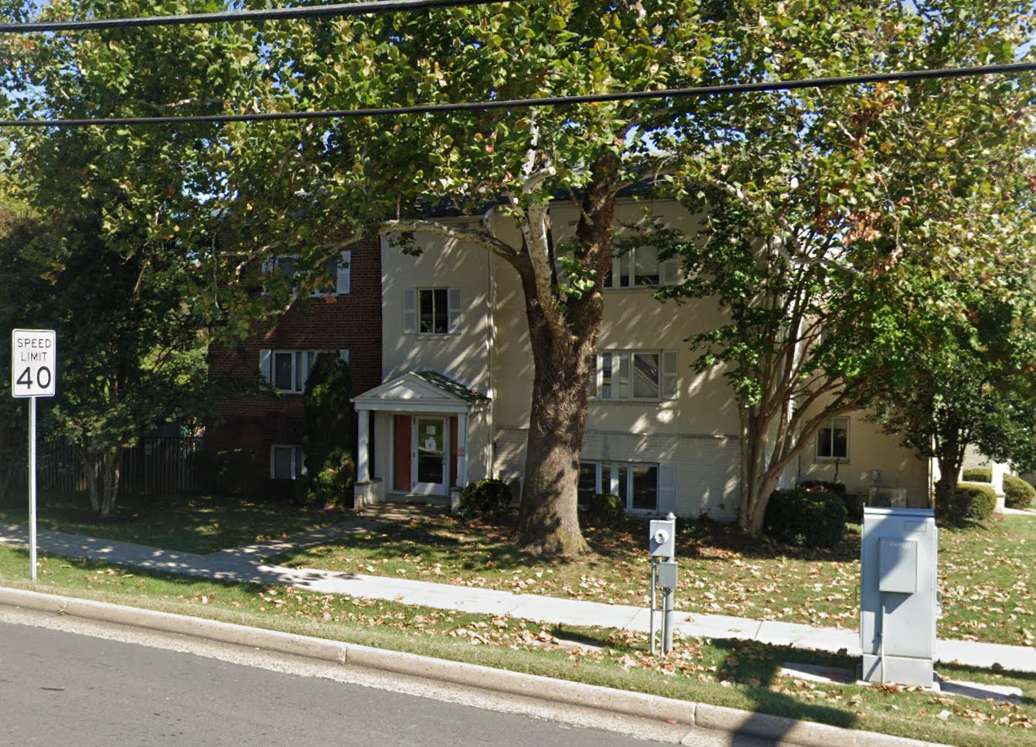
(Updated at 3:35 p.m.) Congress has passed another short-term budget package, averting a partial shutdown of the federal government just hours before a midnight deadline.
In addition to funding the Justice Department, Housing and Urban Development, and other key agencies, the slate of bills passed 75-22 by the Senate on Friday (March 8) includes $12.7 billion in “pork” — money designated for local projects requested by lawmakers for their constituents.
In a joint press release, Sens. Tim Kaine and Mark Warner announced that Fairfax County and other Virginia localities will be among the beneficiaries of the more than 6,600 projects that got funding, per the Associated Press.
“I’m proud that we secured funding for 105 community projects across Virginia that will improve transportation, upgrade water infrastructure, support health care, and more,” Kaine said. “I urge Congress to take up the rest of the government funding bills as soon as possible.”
According to breakdowns provided by Warner’s and Rep. Gerry Connolly’s offices, the biggest allocation for Fairfax County is $4.1 million “to fund a new homeless and domestic violence shelter for families.”
The county’s existing domestic violence and family shelters have exceeded their useful lives, but instead of building new facilities, the Fairfax County Redevelopment and Housing Authority is planning to convert an existing “extended stay” hotel that will be able to house about 50 families a day.
“Site acquisition activities are ongoing, with the goal of securing a location that is well-served by transit, and close to jobs and services,” FCRHA spokesperson Allyson Pearce said.
Connolly’s office says the site “will entail combining rooms, creating service and office space, and other changes to the existing hotel setup,” noting that converting an existing building instead of constructing a new one will enable the county “to deliver this essential, brand new facility years earlier than might otherwise be accomplished.”
The county has two shelters specifically for people fleeing domestic violence — Artemis House and Bethany House — and two shelters that accommodate people with children — the Katherine Hanley shelter outside Centreville and the Patrick Henry shelter in Seven Corners.
The Fairfax County Board of Supervisors approved plans in August 2022 to replace the Patrick Henry shelter with supportive housing after some delays related to land acquisition challenges.
The appropriations package also includes funding for several road and pedestrian projects:
- Spring Street widening from four to six lanes between Herndon Parkway and Fairfax County Parkway ($1 million)
- Fox Mill Road and Pinecrest Road intersection improvements in Herndon ($850,000)
- Silverbrook Road and Lorton Road intersection improvements ($850,000)
- Sidewalk on Ninian Avenue and along Bush Hill Drive to improve safety and accessibility for Bush Hill Elementary School students in Rose Hill ($850,000)
- Gunston Road shared-use path from Julia Taft Way to the Pohick Bay Golf Course entrance in Lorton ($500,000)
- Compton Road bicycle and pedestrian path from the Bull Run Special Events Center access road to the Cub Run Stream Valley Trail in Centreville ($500,000)
- Stone Road trail from the I-66 interchange to an existing trail along southbound Route 28 in Centreville ($500,000)
The Fairfax County Department of Transportation applied for federal grants last summer to fund the Bush Hill and Compton Road projects. Read More
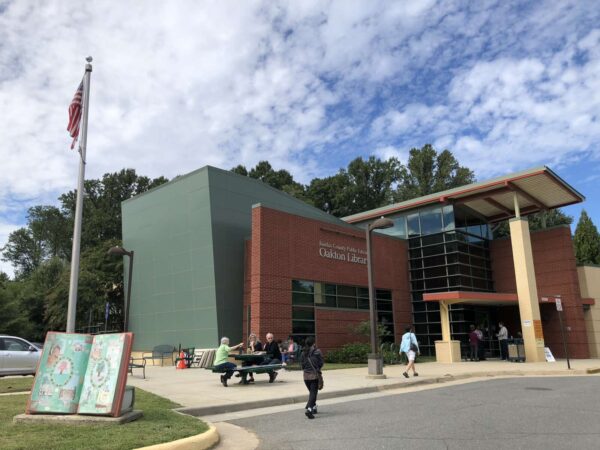
As homelessness increases in Fairfax County, affected residents can use revamped county resources to cope with extreme summer heat.
The county will activate its extreme heat response when the National Weather Service issues a heat advisory, excessive heat watch or excessive heat warning.
As part of the response, 47 county facilities are now designated as cooling centers and will provide supplies, such as water, sunscreen, insect repellant, body wipes, and bus passes, according to a presentation to the Board of Supervisors’ health and human services committee last week.
“Like in previous years, all county facilities that are open to the public can be used by residents to come in for cooling,” Jill Clark, health and human services policy and planning manager with Fairfax County Neighborhood and Community Services, said in the presentation.
The cooling center facilities include all libraries and community centers. In those locations, staff will be prepared to welcome residents in need, and there will be supplies and seating in designated spaces.
Supplies will also be available at shelters and drop-in centers and from outreach workers. Most of the supplies are single-use and/or lightweight and portable. The decision to supply single-use items, among other parts of the plan, came from feedback from a September 2022 survey of 81 unsheltered residents.
“In the responses, you could hear the challenges they experienced both in terms of discomfort and real negative health effects from the extreme heat, including nausea, shortness of breath, exhaustion, asthma attacks, inability to eat as well as sunburns and rashes,” said Tom Barnett, deputy director of housing and community development in the Office to Prevent and End Homelessness.
The county will also aim to better notify unsheltered residents about heat advisories by using a new dedicated channel of Fairfax Alerts.
“We learned through the unsheltered residents survey that most respondents actually have a phone with internet access, and actually prefer getting information about resources and heat alerts via text messages and emails,” Barnett said.
To help residents get to cooling centers, drop-in centers or weather-related overflow sites, the county will offer free Fairfax Connector bus passes in the form of 3,000 postcards that cover two rides each. In addition, the county will provide pre-loaded Transportation Options, Programs & Services (TOPS) cards to assist unsheltered residents who cannot access Fairfax Connector buses.
These changes came out of recommendations from a workgroup that formed in August 2022 in response to concerns raised by the Fairfax County NAACP. The board received the workgroup’s recommendations in a March memorandum.
“The work group and its four committees included a robust membership across many different county departments as well as key partners and representatives from the homeless service providers, the faith community and advocates,” Barnett said.

After a recent study showed an uptick in homelessness, Fairfax County staff say that data connects pretty cleanly to a matching rise in evictions over the last year.
The county saw a 10% increase — 119 people — in people experiencing homelessness for an estimated total of 1,310 people.
“In many ways the connection between housing and homelessness are logical, as homelessness is essentially defined as not having housing,” said Tom Barnett, deputy director of the county’s Office to Prevent and End Homelessness. “Much of the work of a homeless system is helping people in housing crisis find and secure new housing opportunities that match their means and unique needs.”
Barnett said the increase in evictions, in turn, came at the same time as the end of federal and state eviction moratoria.
“The latest trends in evictions coincide with the ending of federal and state eviction moratoria and declining federal resources for emergency rental assistance from pandemic-era funding,” Barnett said. “The federal eviction moratorium ended in August 2021 and the Virginia eviction moratorium ended on June 30, 2022.”
According to the county’s eviction dashboard, there were 2,674 formal writs of eviction issued between June 1, 2020 and the end of 2022. Before Virginia’s moratorium ended, there were only two months in that period with 100 or more writs, but those numbers soared to 280 in October, 317 in November and 248 in December.
Barnett noted that some households are “evicted informally” and can’t be tracked.
In 2021, the county established a Emergency Rental Assistance (ERA) program that assisted households who couldn’t pay rent or utilities during the pandemic, allowing thousands to stay in their homes when they might otherwise have been evicted.
A new program was set up to cover some of those expiring benefits, but Barnett says the $14 million funding that program only accounts for a fraction of the $95 million in federal assistance provided over the last three years.
According to Barnett:
In anticipation of expiring federal benefits, [Health and Human Services] created the ERA Bridge Program in May 2022 and began accepting applications on July 1, 2022. The goal of this program is to keep significant resources in the community while beginning to transition to a new post-COVID operating and funding level still to be determined. The ERA Bridge Program totals approximately $14.0 million and is funded through a combination of federal and County funding. This funding is supplemented by leveraging community-based organization funds (private and federal) in addition to their Consolidated Community Funding Pool (CCFP) funding. This support is facilitated through the County and nonprofit partnership model that existed pre-COVID-19.
It is important to note that pre-pandemic, all rental and transitional housing assistance funded through CCFP totaled approximately $4.0 million. It is understood that post-pandemic funding needs will significantly exceed that amount, and the ERA Bridge Program provides time and space to evaluate future funding level needs.

Fairfax County is continuing to see the number of locals experiencing homelessness over the last year increase — and a new report said inflation and housing costs are partially to blame.
This year’s point-in-time count — an annual count of individuals in shelters, transitional housing, and experiencing unsheltered homelessness — found 1,310 people experiencing homelessness in Fairfax County.
That’s a 10% increase (119 people) over the previous year, when a slight drop was reported. Around 30% of those were adults experiencing chronic homelessness.
The survey found that 87 households said they were fleeing domestic violence and 229 households reported a history of domestic violence, according to Fairfax County.
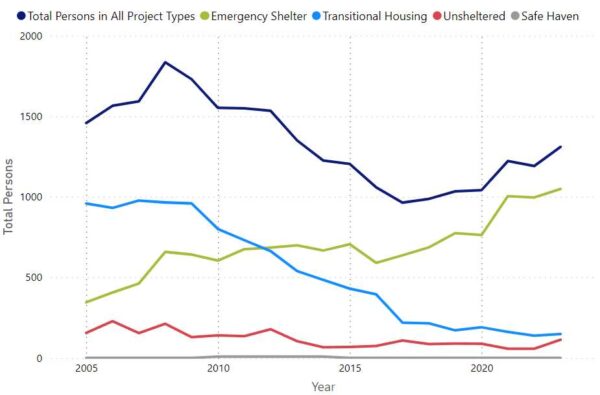
This year’s count follows a recent trend of homelessness increasing again after years of decline throughout the D.C. region.
“After a steady reduction of people experiencing homelessness on the night of the Point-in-Time Counts between the 2008 and 2017, a decrease of 47 percent (871 people),” the county said on the Point-in-Time report. “The number of people experiencing homelessness identified through the counts increased 27 percent (258 people) between 2017 and 2021 and then decreased 3 percent (31 people) in 2022.”
In particular, the report says there’s been a notable increase in families with children facing homelessness:
The number of people in families with children experiencing homelessness increased by 33 percent (188 people) between the 2022 and 2023 counts. This increase is primarily attributed to the multiple negative impacts of the COVID-19 pandemic on families in terms of health, employment, and inflationary costs, especially for housing. Meanwhile, the number of single adults experiencing homelessness decreased by 11 percent (71 people) during the same time.
As with the previous year, the report noted that people who identify as Black or African American are disproportionately likely to experience homelessness in Fairfax County:
The most significant disparity in the demographics of those experiencing homelessness on the night of the 2023 Point-in-Time Count remains the disproportionate representation of people identifying as Black or African American. While 10.8 percent of the general population in Fairfax County is estimated to identify as Black or African American , 48 percent of people experiencing homelessness on the night of the count identified as Black or African American. The imbalance slightly improved from the 2022 count, when 50 percent of people identified as Black or African.

Fairfax County hopes to make use of American Rescue Plan funding to help provide housing for some of those most in need.
In a meeting of the Board of Supervisors Housing Committee last week, staff from the Department of Housing and Community Development said a tranche of federal funding could help local residents in more extreme levels of poverty than most affordable housing programs in the county assist.
“This is a rare funding opportunity specifically targeted to reducing homelessness and can serve populations at the extreme low end of the spectrum,” said Thomas Barnett, deputy director of the Office to Prevent and End Homelessness. “This provides not just housing, but money for supportive services that we know people need.”
Fairfax County was awarded $7.88 million from the U.S. Department of Housing and Urban Development (HUD).
According to the presentation to the committee:
HOME-ARP funds must be used to primarily benefit individuals or families from the following qualifying populations:
- Homeless
- At risk of homelessness
- Those fleeing, or attempting to flee, domestic violence, dating violence, sexual assault, stalking, or human trafficking
- Other families requiring services or housing assistance to prevent homelessness
- Households at greatest risk of housing instability
Barnett said there are around 88 permanent supportive housing projects in the pipeline that the nearly $8 million in federal funding could go toward. The funding comes as Fairfax County deals with an uptick in people experiencing homelessness, caused in large part by the pandemic and related economic turmoil.
“Chronic homelessness has increased disproportionately during the pandemic,” Barnett said. “[It’s] up 34% in the last 5 years.”
Even within that category, some supervisors said they’d like to see funding targeted specifically on addressing youth homelessness. The most recent Point-in-Time Count — a survey of people experiencing homelessness in the span of one night — found 91 people between the ages of 18-24 experiencing homelessness in Fairfax County.
“We have, as you point out, a rare funding opportunity with a big infusion of funds,” Board Chairman Jeff McKay said. “I’m still troubled by, when we get that Point-in-Time Count, that homeless youth count…I would like more information coming back as to what strategies we might employ to help with that, to use this rare opportunity funding to solve what we know is always a difficult thing to work with under normal circumstances, can any of this be used to accelerate that.”

With a high office and commercial vacancy rate and over 1,000 locals experiencing homelessness, Fairfax County is considering a zoning change that could use one problem to help solve the other.
The proposal would allow unused commercial spaces, including office and hotel space, to be used as emergency shelters for those experiencing homelessness.
The new zoning would let private entities — namely nonprofits that work with those experiencing homelessness — operate emergency shelters in vacant or underutilized commercial or industrial properties.
“Special exception use would permit repurposing of a commercial building in a commercial, Industrial, or in some Planned Districts with approval by the Board,” a staff report on the change said. “Commercial building includes buildings designed or used for office, hotel, retail, institutional, or industrial purposes.”
In a presentation to the Board of Supervisors housing committee on Nov. 22, staff said there is currently no “emergency shelter” use in the county zoning code.
In addition to creating an emergency shelter use, the zoning change would add a “permanent supportive housing” use for housing that provides assistance and supportive services, like transportation and training, to residents. Supportive housing is reserved in the zoning ordinance for those making below 60% of the area median income.
The presentation didn’t include information on incentives to get private property owners to open their space up for use used as emergency shelter, but board members still expressed enthusiasm for the idea.
“We’ve had similar conversations to this before, but I think we’re in a different situation right now,” said County Board Chair Jeff McKay, “not only with what we know about homelessness but that we also, unfortunately, have a higher number of vacancies because of Covid. I think it’s time to have a conversation about adaptive reuse.”
The proposed changes are part of a general push by the county to reevaluate how it tackles homelessness, particularly by increasing the availability of permanent and supportive housing instead of relying on temporary shelters.
The last point-in-time count, conducted on Jan. 26, found 1,191 people experiencing homelessness in the county, a decrease from 2021 but higher than the numbers reported in the most recent years preceding the pandemic. About 50% of the individuals counted were Black, even though only 10% of the county’s population falls in that demographic.
During the initial months of the pandemic, the county enlisted hotels as temporary shelter for individuals who were experiencing homelessness or otherwise lacked space needed for isolating or quarantining due to Covid.
Photo via Tim Mossholder/Unsplash
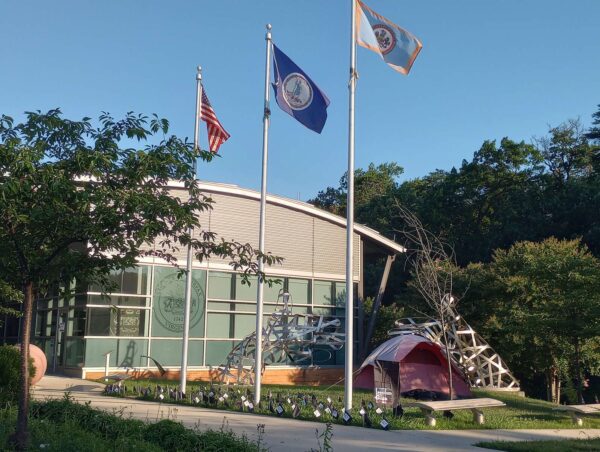
(Updated at 3:30 p.m.) A demonstration that brought tents to the North County Government Center in a push for more supportive housing in Reston has come to a close after the final tent was officially removed late last week.
Reston Strong, the nonprofit organization behind the protest to increase Fairfax County’s affordable housing stock, announced that the last tent in front of Hunter Mill District Supervisor Walter Alcorn’s office was removed after it was first installed on April 4.
The woman living in the tent was moved into permanent supportive housing with access to other services, Reston Strong announced on Thursday (Oct. 13).
The announcement culminates the group’s Neighbors in Tents campaign, which aims to address homelessness in the county.
The organization says that more than 20 tents across four sites still remain in Reston.
“The largest encampment is home to individuals who were also displaced in the spring when hypothermia shelters closed,” Reston Strong wrote in a statement. “Several are women, elderly, and LGBTQ+ who are still waiting on housing. The crisis is far from over but for today we celebrate, for tonight one of our beloved unhoused neighbors will sleep in her own bed, in her own room, in her own apartment.”
When asked for comment, Alcorn’s office deferred to the Fairfax County Department of Housing and Community Development.
Ben Boxer, a spokesperson for the department, lauded community partners for their efforts to eradicate homelessness in the county:
All of our Fairfax County shelters are open, and we encourage anyone who is experiencing homelessness to please contact or visit us at these locations where they may obtain food, showers, laundry, counseling, and other assistance to help them meet their basic needs. We also have experienced and knowledgeable individuals at these locations working to create housing plans to meet the individual preferences and needs of our guests. Additionally, we are actively preparing for our upcoming Hypothermia Prevention Program season, beginning December 1, which provides added capacity to ensure that no one has to sleep outside this winter.

With the D.C. area’s summer heat in full swing, local organizers worry that there are too few options for unhoused residents in the county to cool down.
Last month, the Fairfax County NAACP approved a resolution calling on Fairfax County to improve heat relief services for low-income residents and those experiencing homelessness in the county.
“Summer temperatures and storm frequencies are increasing due to climate change, thus homeless people are at greater risk of health impacts and even death,” says the resolution approved by the civil rights organization’s executive committee on July 28.
Potential solutions proposed by the resolution include a pilot program like D.C.’s heat emergency plan, better communication of hours and locations for the county’s cooling centers, vouchers to families for motel rooms, and distributions of water bottles, personal fans, and sunscreen at government centers.
The Fairfax NAACP general membership unanimously approved a resolution to work with the county to enhance heat relief services to homeless residents in August. At NAACP's request, an assessment of current heat emergency plans will be conducted. Full text: https://t.co/NhVrgAvslF pic.twitter.com/eBekzJr1uu
— Fairfax County NAACP (@FairfaxNAACP) July 29, 2022
In response to the resolution, the Fairfax County Board of Supervisors Health and Human Services Committee directed the Department of Health and Human Services (DHHS) to provide the county’s current heat emergency plan.
In a memo dated July 29, DHHS listed a number of options available for cooling down. It also agreed to “enhance our efforts” and enact more “immediate action” for the county’s unhoused residents in need of relief from the August heat and humidity:
This work includes addressing transportation access gaps, evaluating both the variety and coordination of supply disbursements (both direct provision and at our cooling sites), considering the use of hotel vouchers in the event overflow shelters are at capacity, and providing a more robust communications plan as well as additional opportunities to provide direct communication outreach to individuals in need.
Additionally, NAACP officials tell FFXnow that a committee will meet tomorrow (Aug. 12) to discuss more solutions and ways to better help those in need.
Mary Paden, who chairs the NAACP’s Fair and Affordable Housing Committee, says she’s encouraged by the county’s willingness to listen and work with the group. But action needs to happen now, considering there are likely plenty of very hot days still left in the summer.
“Many [unhoused residents] are older and sick and are more affected by the heat than a younger, healthier person,” Paden said. “It took deaths for the hypothermia program to get set up in the winter…and you wonder if we have to wait for a death to get really serious about taking care of people in the heat.” Read More
Reston Strong, a local volunteer-run advocacy organization, is commemorating the 100th day of its Neighbors in Tents campaign to address homelessness in Fairfax County.
On Tuesday, the organization marked the 100th day of unhoused residents staying in a temporary tent community in front of the North County Government building. The tents were set up this spring as an alternative after the county’s hypothermia and COVID-19 emergency shelters wound down.
“Tents were not what Reston Strong wanted. They were a temporary solution in the absence of a governmental one,” organizers said.
Organizers say they are still waiting for permanent solutions, including a mobile mental health crisis unit in Reston and changes to the county’s zoning ordinance that would allow temporary transitional housing as a by-right use in empty commercial buildings and spaces.
In a symbolic gesture, the group installed 100 black flags around the center and delivered funeral wreaths with 100 black roses to Board of Supervisors Chairman Jeff McKay and Hunter Mill District Supervisor Walter Alcorn.
Now, with temperatures rising, Reston Strong is asking the county to provide 24-hour cooling centers and access to drinking water for individuals in the temporary tents.
In a statement to FFXnow, Alcorn noted that discussion on the issue has been ongoing for several years.
“This is not a new challenge for Reston and Fairfax County and I am committed to seeking long-term solutions,” Alcorn wrote in a statement.
In April, Alcorn directed the county’s Office to Prevent and End Homelessness to review the current performance of the county and nonprofit service providers. He asked staff to update the county’s homelessness strategies in coordination with the Affordable Housing Advisory Council.
He also set a goal of adding 1,000 affordable housing units in the Hunter Mill District by the end of 2027.
“Everyone in our community, regardless of circumstances, deserved to be treated with respect and humanity,” Reston Strong organizers wrote.

